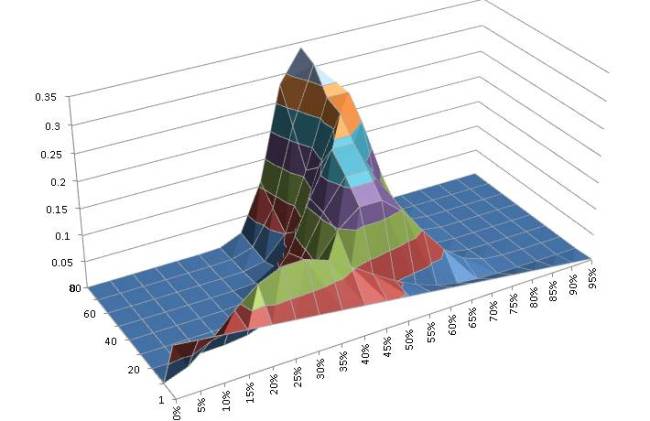The simplest possible Bayesian model
2013.04.16 Leave a comment
MathJax.Hub.Config({
extensions: [“tex2jax.js”],
jax: [“input/TeX”, “output/HTML-CSS”],
tex2jax: {
inlineMath: [ [‘$’,’$’], [“\\(“,”\\)”] ],
displayMath: [ [‘$$’,’$$’], [“\\[“,”\\]”] ],
processEscapes: true
},
“HTML-CSS”: { availableFonts: [“TeX”] }
});
In chapter 5, Kruschke goes through the process of using Bayes’ rule for updating belief in the ‘lopsidedness’ of a coin. Instead of using R I decided to try implementing the model in Excel.
The Model
Coin tosses are IID with a distribution, thus the probability of observing
of which
are heads is
Using Bayes’ rule we get
Note that if is already of the form
where the denominator is a normalizing constant then .
Excel implementation
This is very straight-forward using the BETADIST function, which is cumulative, so we divide the unit interval into equally spaced subintervals, calculate the probability of being in the interval and update on the basis of the new observations.
Here’s the result.

Recent Comments